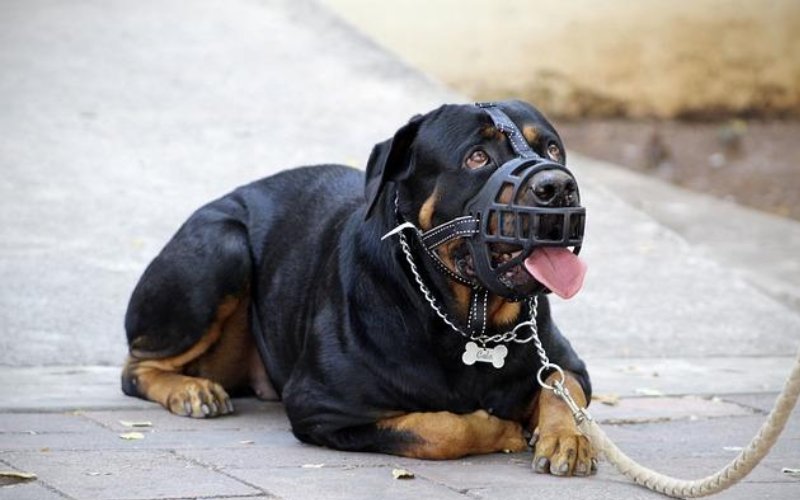Dog Aggression: Causes, Training Tips, and Effective Solutions
As a responsible dog owner, it is your duty to ensure that your dog behaves properly wherever it goes. You are responsible for all that your dog does and have to face the consequences of its actions.
Unfortunately, even a calm dog can get aggressive if it feels afraid, stressed, or threatened. Many dog owners ignore the first signs of aggression if their dog is otherwise calm. They think it won’t happen again- that it was a fluke. The fact is: even the smallest sign of canine aggression is a matter of concern and needs to be addressed immediately.
If you ignore the early signs of aggression, the behavior is bound to occur again. It might even reach a point where someone gets hurt.
Unfortunately, many dog owners choose to deal with their pet’s aggression in one of two ways:
- Keeping their dog away from other dogs and humans or ignoring the behavior
- Punishing or hitting the dog
Unfortunately, an aggressive dog could even turn on its owner. If left unchecked, you might even live in fear of your own dog. And no dog owner should have to deal with that.
What Triggers a Dog To Be Aggressive?
Some breeds are naturally more aggressive than others. Thus, genetics can play a huge role. Breeds like Pitbulls, Dobermans, and Rottweilers are generally known to be more aggressive than others. However, any dog can get aggressive, irrespective of its breed, if it feels threatened.
Old-habits die hard. Abused dogs, dogs with past trauma, or shelter dogs tend to show aggression as they are just trying to survive. They generally perceive everything as a threat.
Aggression is also a natural instinct. A dog may show aggression when it feels the need to protect what it considers to be its property – food, territory, and even its owner. A starved dog is also more likely to show food aggression.
Lack of training and socialization during crucial socialization are some of the main causes of canine aggression. Your dog might bark aggressively when another dog barks. But with adequate early socialization and training, you can easily control and prevent this behavior.
If a dog feels threatened or stressed, it might show aggression to counter that threat. Remember – even a well-trained dog may become aggressive in such a case since it is acting out of instinct.
Sometimes, as a dog owner, you may have inadvertently trained your furry pal to be aggressive. Perhaps you gave it a reward when it barked – leading your dog to think that his barking was a ‘wanted behavior’.
A physiological issue or illness can also trigger aggression in an otherwise calm dog. If your docile and sweet natured dog starts growling, snapping, or biting when you touch it, please see your vet.
How Do You Stop Aggression in Dogs?
Start by understanding the signs of aggression in your dog. Recognizing the warning signs will let you have greater control over your dog’s aggression and prevent the situation from getting out of hand.
Establish yourself as the pack leader and set the rules early on. By showing your dog that you are its master, you can control and prevent a lot of unwanted behaviors. If you’re not firmly established as the alpha in your dog’s mind, it will constantly challenge you, and that may result in aggression.
Basic obedience training is important to establish yourself as your dog’s master. Commands like No, Stay, Sit, Heel, etc. can help you keep your dog’s behavior in check and help you better control it.
It is important to be consistent with your dog. You cannot correct it’s aggressive behavior sometimes and let it get away with those behaviors at other times.
Never use punishment to counter your dog’s aggression. This may worsen the behavior, as your pet might stop giving warning signs and go for aggressive moves like biting. Always work calmly. Do not shout or move suddenly. This may cause the dog to become even more aggressive as it perceives you as a threat.
If needed, consult a professional dog trainer to help you. All types of dog aggression have a root cause. A professional dog trainer can help you understand the root cause, which, in turn, can help you better understand your pet.
Some More Tips For Dealing With Dog Aggression
- Always work with a professional dog trainer. Almost 4.3 million people get bitten by dogs annually in the US. You do not want to add to that statistic. Dog trainers are experts in the field and they know how to handle canine aggression safely.
- Identify the underlying cause. If needed, seek medical help. No amount of dog training will help if your dog is aggressive due to pain or illness.
- Spay or neuter your pet.
- Stay calm. Your dog senses your moods and can read your body language. If you are tense, it will get tense and display aggression.
- Use safety equipment where needed. This includes muzzles, training collars, etc. This is important for the safety of people and other dogs around your aggressive dog.
- Desensitize your dog to its triggers gradually. Use rewards and verbal praise.
If you are dealing with dog aggression, please contact us today so we can help you.
828-338-8255
[email protected]
Olk9ashe.dog


